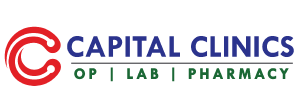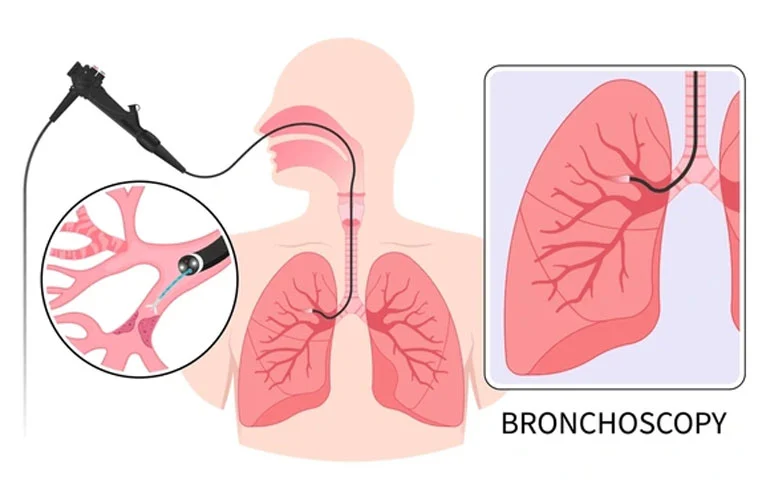- Home
- Departments
Departments Of Bronchoscopy
BronchoscopyBronchoscopy is a medical procedure used to examine the inside of the airways (bronchi) and lungs. It involves the use of a bronchoscope, a thin, flexible tube with a light and camera attached to it, which is inserted through the nose or mouth and into the airways. Bronchoscopy allows healthcare providers to visualize the bronchial tree, take tissue samples (biopsies), remove foreign objects, and perform various diagnostic and therapeutic interventions.
Key Features of Bronchoscopy:
Indications: Bronchoscopy may be performed for diagnostic or therapeutic purposes. Common indications for bronchoscopy include evaluation of chronic cough, hemoptysis (coughing up blood), abnormal chest X-ray findings, suspected lung infections, lung nodules or masses, airway obstruction, suspected lung cancer, and evaluation of lung function.
Types of Bronchoscopy: There are two main types of bronchoscopy: flexible bronchoscopy and rigid bronchoscopy. Flexible bronchoscopy is the most commonly used type and involves the insertion of a flexible bronchoscope through the nose or mouth. Rigid bronchoscopy, on the other hand, uses a rigid metal tube and is typically performed under general anesthesia in the operating room for more complex procedures or in patients with difficult airway anatomy.
Procedure: During the bronchoscopy procedure, the patient is typically sedated to help them relax and minimize discomfort. Local anesthesia may also be applied to the nose, throat, or back of the throat to numb the area and reduce gag reflexes. The bronchoscope is then inserted through the nose or mouth and advanced through the throat and into the airways. The bronchoscope allows the healthcare provider to visualize the trachea, bronchi, and bronchioles and examine the lung tissue for abnormalities.
Diagnostic Interventions: Bronchoscopy enables various diagnostic interventions, including bronchoalveolar lavage (BAL), transbronchial biopsy (TBBx), endobronchial biopsy (EBBx), transbronchial needle aspiration (TBNA), brushings, and bronchial ultrasound (EBUS). These procedures allow for the collection of samples for analysis and diagnosis of conditions such as infections, inflammation, tumors, and other lung diseases.
Therapeutic Interventions: In addition to diagnostic procedures, bronchoscopy can also be used for therapeutic interventions to treat certain airway and lung conditions. Therapeutic bronchoscopy procedures may include airway stent placement, bronchial thermoplasty, laser therapy, electrocautery, cryotherapy, endobronchial valve placement, balloon dilation, and removal of foreign bodies or secretions.
Complications: While bronchoscopy is generally considered safe, it carries some risks and potential complications, including bleeding, infection, perforation of the airway, aspiration, allergic reactions to medications or anesthesia, and respiratory complications such as bronchospasm or pneumothorax. The risk of complications depends on various factors, including the patient's overall health, the type of procedure performed, and the skill and experience of the healthcare provider.
Post-Procedure Care: After bronchoscopy, patients are typically monitored for a brief period in the recovery area to ensure their safety and stability. They may experience minor symptoms such as sore throat, coughing, hoarseness, or mild bleeding from the nose or throat, which usually resolve within a few hours. Patients are advised to avoid eating or drinking until the effects of sedation wear off and to follow any specific post-procedure instructions provided by their healthcare provider.
Overall, bronchoscopy is a valuable diagnostic and therapeutic tool for evaluating and treating various respiratory conditions. It allows healthcare providers to visualize the airways, obtain tissue samples, and perform interventions to diagnose and manage lung diseases effectively. Close collaboration between clinicians, pulmonologists, and other healthcare professionals is essential to ensure safe and successful bronchoscopy procedures.

